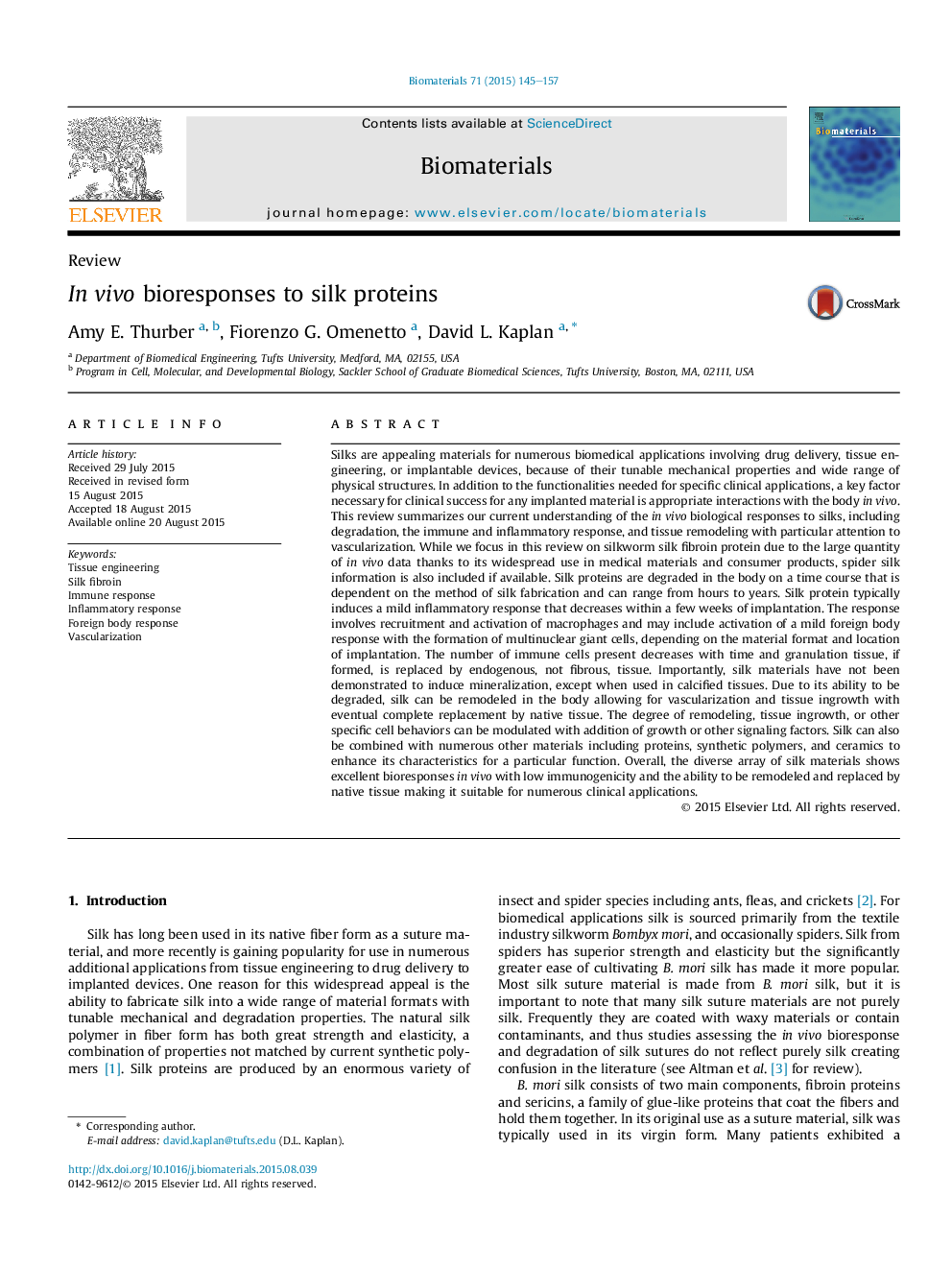| کد مقاله | کد نشریه | سال انتشار | مقاله انگلیسی | نسخه تمام متن |
|---|---|---|---|---|
| 5480 | 392 | 2015 | 13 صفحه PDF | دانلود رایگان |

Silks are appealing materials for numerous biomedical applications involving drug delivery, tissue engineering, or implantable devices, because of their tunable mechanical properties and wide range of physical structures. In addition to the functionalities needed for specific clinical applications, a key factor necessary for clinical success for any implanted material is appropriate interactions with the body in vivo. This review summarizes our current understanding of the in vivo biological responses to silks, including degradation, the immune and inflammatory response, and tissue remodeling with particular attention to vascularization. While we focus in this review on silkworm silk fibroin protein due to the large quantity of in vivo data thanks to its widespread use in medical materials and consumer products, spider silk information is also included if available. Silk proteins are degraded in the body on a time course that is dependent on the method of silk fabrication and can range from hours to years. Silk protein typically induces a mild inflammatory response that decreases within a few weeks of implantation. The response involves recruitment and activation of macrophages and may include activation of a mild foreign body response with the formation of multinuclear giant cells, depending on the material format and location of implantation. The number of immune cells present decreases with time and granulation tissue, if formed, is replaced by endogenous, not fibrous, tissue. Importantly, silk materials have not been demonstrated to induce mineralization, except when used in calcified tissues. Due to its ability to be degraded, silk can be remodeled in the body allowing for vascularization and tissue ingrowth with eventual complete replacement by native tissue. The degree of remodeling, tissue ingrowth, or other specific cell behaviors can be modulated with addition of growth or other signaling factors. Silk can also be combined with numerous other materials including proteins, synthetic polymers, and ceramics to enhance its characteristics for a particular function. Overall, the diverse array of silk materials shows excellent bioresponses in vivo with low immunogenicity and the ability to be remodeled and replaced by native tissue making it suitable for numerous clinical applications.
Journal: Biomaterials - Volume 71, December 2015, Pages 145–157